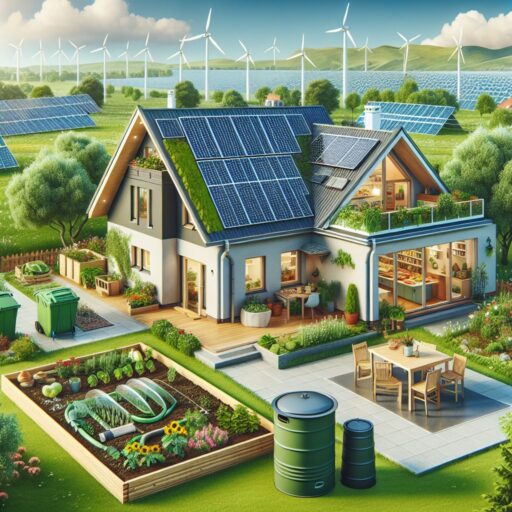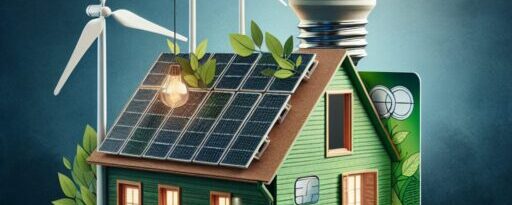Energy Efficient Home Improvement: Tips for Saving Money and Energy
Have you ever thought about how much energy your home uses every day? From turning on lights to heating water, energy is used constantly. But sometimes, we waste more energy than we need. Making your home more energy efficient can help save money, protect the environment, and make your house more comfortable. In this article, we will talk about ways to improve your home’s energy efficiency. You’ll learn simple tips and big ideas that can make a difference. Let’s get started!

Understanding Energy Efficiency in Homes
![]()
Energy efficiency means using less energy to do the same tasks. For example, a lightbulb that uses less electricity but still gives bright light is energy efficient. Homes can be energy efficient too.
- Energy-efficient homes use less power for heating, cooling, and lighting.
- They help lower monthly energy bills.
- They also reduce pollution that harms the planet.
One example of an energy-efficient home improvement is adding insulation. Insulation keeps warm air inside during winter and cool air inside during summer. This reduces the need for heaters and air conditioners.
Another way is by sealing cracks or gaps in doors and windows. A small gap can let hot or cold air escape, which wastes energy. Fixing these gaps saves energy and makes your home cozier.
Statistics show that energy-efficient homes can cut energy use by up to 30%. That’s a big saving! By understanding what energy efficiency means, you’re one step closer to making smart changes at home.
Benefits of Energy Efficient Home Improvements
![]()
Why should you care about energy efficiency? There are many good reasons!
- It saves money on electricity, gas, and water bills.
- It helps protect the environment by reducing pollution.
- It makes your home more comfortable to live in.
For example, replacing old windows with energy-efficient ones can keep your home warmer in winter and cooler in summer. This means you won’t need to use as much heating or air conditioning.
Energy-efficient appliances, like refrigerators or washing machines, also use less electricity. Over time, this adds up to big savings. If your family spends $200 a month on energy, you could save around $60 each month after making improvements.
Another important benefit is helping the planet. Homes that use less energy produce fewer greenhouse gases. These gases cause climate change, so reducing them is good for everyone.
Lastly, energy-efficient homes often have higher resale values. If you decide to sell your home one day, buyers might pay more for a house that costs less to run.
Improving Insulation to Save Energy
![]()
Insulation is like a blanket for your home. It keeps heat inside during cold months and keeps it out during hot months. But not all homes have good insulation.
- Check your attic, walls, and floors for proper insulation.
- Add more insulation if needed, especially in older homes.
- Use materials such as fiberglass or foam for better results.
For instance, a family in Michigan added insulation to their attic. Before, they spent $300 a month on heating. After the upgrade, their bill dropped to $200. That’s a $100 saving every month!
Good insulation also reduces noise from outside. If you live near a busy road, adding insulation can make your home quieter.
Experts say that proper insulation can save up to 20% on heating and cooling costs. It’s one of the simplest and most effective changes you can make.
Remember, insulation works best when there are no gaps or leaks. So, seal any cracks in your walls or ceilings before adding insulation.
Upgrading to Energy-Efficient Windows
![]()
Windows play a big role in keeping your home energy efficient. Old windows often let air in and out, which wastes energy.
- Replace single-pane windows with double or triple-pane ones.
- Look for windows with special coatings that reflect heat.
- Use weatherstripping to seal gaps around window frames.
A family in Arizona replaced their old windows with energy-efficient models. They noticed their home stayed cooler in summer without needing extra air conditioning.
Energy-efficient windows also block harmful UV rays. These rays can fade furniture and carpets over time. With better windows, your belongings stay protected.
Studies show that upgrading windows can save up to 15% on energy bills. Plus, new windows can make your home look nicer from the outside.
If replacing all windows at once is too expensive, start with the rooms you use the most. Gradually upgrade the rest over time.
Choosing Energy-Saving Appliances
![]()
Many appliances in your home use electricity every day. Some are more energy efficient than others. Choosing the right ones can save a lot of energy.
- Look for appliances with the ENERGY STAR label.
- Replace old refrigerators, washing machines, and dishwashers.
- Unplug devices when not in use to avoid wasting power.
For example, an ENERGY STAR refrigerator uses about 15% less energy than a standard model. Over a year, this can save enough electricity to power a small fan for several months.
Smart thermostats are another great option. They let you control your home’s temperature even when you’re not there. This prevents wasting energy while you’re away.
In a study, families who switched to energy-efficient appliances saved around $500 per year. That’s money you can spend on other things!
When buying new appliances, think about long-term savings. Even if they cost more upfront, they often pay for themselves over time.
Switching to LED Lighting
![]()
Lighting is something we use every day. Traditional lightbulbs waste a lot of energy, but LED bulbs are different.
- LEDs use up to 75% less energy than regular bulbs.
- They last much longer—up to 25,000 hours.
- Available in different colors and brightness levels.
A school in Texas replaced all its lights with LEDs. Their electricity bill dropped by 40%, saving thousands of dollars each year.
LED bulbs are also safer because they don’t get as hot as traditional bulbs. This reduces the risk of fire.
Switching to LEDs is easy. Start with the rooms you use the most, like the kitchen or living room. Over time, replace all the lights in your home.
By using LED lighting, you can make your home brighter, safer, and more energy-efficient.
Using Renewable Energy Sources
![]()
Renewable energy comes from natural sources like the sun and wind. Adding renewable energy to your home can make it very energy efficient.
- Install solar panels on your roof.
- Use small wind turbines if you live in a windy area.
- Buy green energy from your local utility company.
A family in California installed solar panels on their home. Now, they generate enough power to run everything, including their electric car. They even sell extra electricity back to the grid!
Solar panels can be expensive to install, but many governments offer tax credits to help with the cost. Over time, they can save you thousands of dollars on energy bills.
Wind turbines work well in areas with steady winds. They can power small appliances or even an entire home.
Using renewable energy not only saves money but also helps the environment. It’s a win-win solution for everyone.
Simple Changes You Can Make Today
![]()
You don’t need to spend a lot of money to make your home energy efficient. Small changes can also make a big difference.
- Turn off lights when leaving a room.
- Use fans instead of air conditioning when possible.
- Wash clothes in cold water to save energy.
Another tip is to use curtains or blinds to block sunlight in the summer. This keeps your home cooler without using air conditioning.
A study found that families who made small changes reduced their energy use by 10%. It doesn’t sound like much, but it adds up over time.
Talk to your family about energy-saving habits. Everyone can pitch in and help. Together, you can make a big impact.
Even the smallest actions matter. Start today and see the difference it makes.
Conclusion: Building a Better Future
![]()
Improving your home’s energy efficiency has many benefits. It saves money, protects the environment, and makes your home more comfortable. From adding insulation to switching to LED bulbs, there are many ways to get started. Every little change helps. By working together, we can create homes that are better for us and the planet. Start your energy-efficient journey today and build a brighter future for tomorrow!
